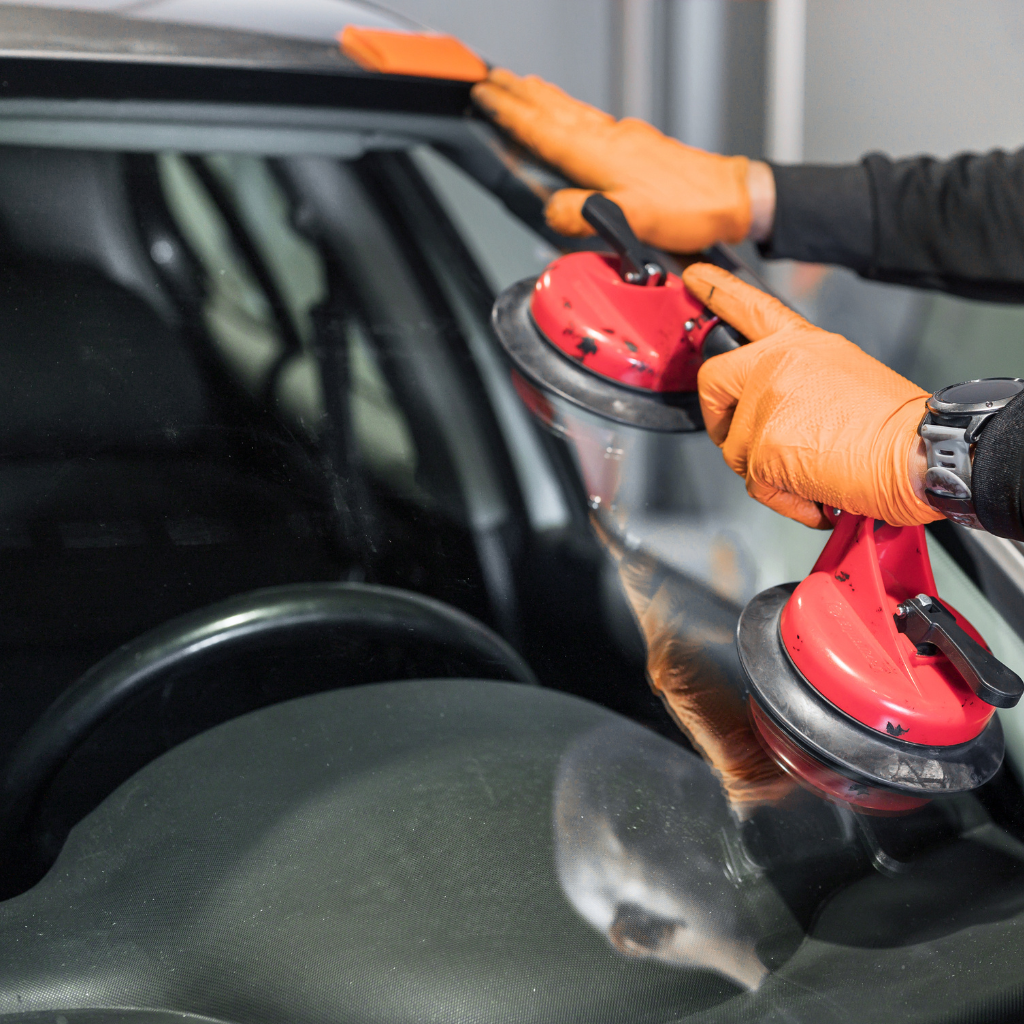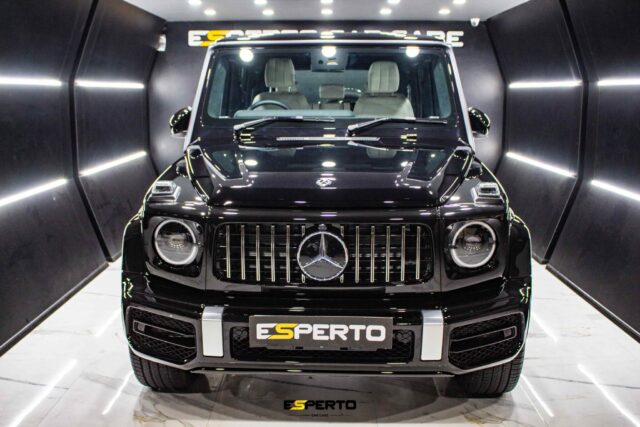Anti-glare film for cars is engineered to mitigate the effects of disruptive sun glare, using advanced micro-layer technology to refract and diffuse incoming light. This sophisticated glare-reducing sun film not only enhances driver visibility and comfort but also reduces eye strain by minimizing reflections. Additionally, it filters out over 99% of harmful UV rays, safeguarding both passengers and vehicle interiors. With numerous types available, understanding their installation and benefits becomes essential for informed decisions.
Key Takeaways
- Anti-glare film reduces sunlight glare by refracting and diffusing incoming light for better visibility.
- It screens out over 99% of harmful UV rays, protecting passengers and car interiors.
- The film helps maintain a cooler car interior by blocking up to 60% of solar heat.
- Reduced glare minimizes eye strain and improves driver focus and comfort.
- It enhances energy efficiency by decreasing air conditioning reliance, leading to fuel savings.
What is Anti-Glare Film and How Does it Work for Cars?
Anti-glare film employs advanced technology to effectively reduce glare by diffusing light reflections on car windows.
This film enhances driver visibility and comfort by mitigating the intensity of sunlight and oncoming headlights.
Additionally, the application of anti-glare window film offers benefits such as increased privacy and UV protection, making it a valuable upgrade for automotive safety and convenience.
Understanding Anti-Glare Technology
When driving conditions are less than ideal due to bright sunlight or oncoming headlights, visibility can be greatly impaired.
Anti-glare technology offers a solution through the application of a specialized film on car windows. This anti-glare film serves as a barrier against excessive sunlight, effectively reducing glare and enhancing driver visibility.
Manufactured with advanced materials, the film employs micro-layers that refract and diffuse incoming light, thereby minimizing the intensity of sun and headlight reflections.
By incorporating this technology, the film considerably contributes to glare reduction, consequently improving overall safety.
Industry insights indicate that the demand for these films is growing, as drivers seek to reduce glare and enhance comfort. Such innovations underscore the importance of anti-glare solutions in automotive applications.
How Anti-Glare Film Reduces Glare in Cars
Expanding on the benefits of anti-glare technology, the application of anti-glare film on car windows addresses the challenge of impaired visibility caused by intense light conditions. Anti-glare window films are engineered with advanced materials that reduce glare by allowing ideal light transmission while minimizing the intensity of sunlight entering through the windshield. These films incorporate a reflective anti-glare coating, enhancing glare reduction and UV protection. Additionally, they contribute to heat rejection, maintaining a cooler interior environment. Safety films provide added protection by reinforcing glass strength.
| Feature | Benefit | Application |
|---|---|---|
| Glare Reduction | Improved Visibility | Windshield |
| UV Protection | Interior Preservation | All Windows |
| Heat Rejection | Enhanced Comfort | Entire Cabin |
This advanced technology guarantees safer and more comfortable driving conditions.
Benefits of Using Anti-Glare Window Film
As drivers contend with varying light conditions, the application of anti-glare window film offers a sophisticated solution by enhancing both visibility and comfort. This film serves to reduce disruptive reflections, thereby improving vision and safety within the vehicle.
Effective screening out and absorbing harmful UV rays not only protects occupants but also preserves the vehicle’s interior from sun damage. Additionally, anti-glare film mitigates heat accumulation, enhancing the driving experience by maintaining a cooler environment.
The advanced technology incorporated in these films guarantees ideal performance by minimizing glare while maximizing clarity. As a valuable addition, such films contribute to reducing eye strain and enhancing driver focus, resulting in a safer and more comfortable driving experience.

How Does Anti-Glare Film Protect from Harmful UV Rays?
Anti-glare film for cars provides significant protection against harmful ultraviolet rays to provide UV protection, which are known to cause damage to both vehicle interiors and occupants.
Prolonged exposure to UV rays can lead to fading, cracking, and deterioration of materials such as leather and plastic, as well as increase the risk of skin damage for passengers.
UV Protection Benefits of Anti-Glare Film
While driving, exposure to ultraviolet (UV) rays can present significant health risks and contribute to the degradation of a vehicle’s interior.
Anti-glare film acts as a protective barrier against the sun’s rays by leveraging advanced tint technology to reduce glare and block harmful UV radiation. This film not only filters out the sun’s harmful elements but also enhances comfort through heat resistance.
The benefits of anti-glare film include:
- Glare Reduction: Minimizes visual discomfort and enhances driving safety.
- UV Block: Filters up to 99% of UV rays, protecting occupants from skin damage.
- Radiation Shield: Acts as an effective barrier against harmful solar radiation.
- Heat Resistance: Reduces interior temperature, supporting energy efficiency and comfort.
This technology offers a multifaceted approach to vehicle protection.
Impact of UV Rays on Car Interiors
The protective qualities of anti-glare film extend beyond personal health to encompass the preservation of a vehicle’s interior.
UV rays can cause significant damage to car interiors, fading upholstery, and degrading dashboard materials. Anti-glare window film acts as a barrier, applying a specialized coating on the glass surface that effectively minimizes glare and heat gain.
This sun control film offers superior heat rejection, safeguarding the vehicle’s interior from harmful UV exposure. Reducing the penetration of UV rays enhances the longevity of interior components and maintains the aesthetic appeal of the vehicle.
Additionally, these films aid in improving visibility for drivers by reducing reflective glare inside the car, contributing to a safer and more comfortable driving experience.
How Anti-Glare Film Blocks UV Radiation
Although often overlooked, the mechanism by which anti-glare film blocks UV radiation is a sophisticated process grounded in advanced materials science.
The film for cars employs nano coating technology to prevent harmful UV rays from penetrating the vehicle interior.
Key attributes of this technology include:
- Nano-Layered Structure: These films utilize multiple nano-layers, which act as a barrier against UV radiation, effectively reducing heat and temperature inside the vehicle.
- Coating Technology: The specialized coatings allow more light to pass through, providing a clear view without compromising on glare reduction.
- UV Absorption: The films are engineered to absorb and reflect UV rays, consequently providing necessary shade and protecting interiors.
- Durability: Designed for longevity, the film maintains its protective qualities over time, ensuring occupants see clearly and comfortably.
What are the Different Types of Anti-Glare Films Available?
Anti-glare films for cars are available in various types, each utilizing distinct coating technologies to reduce glare and enhance visibility.
Ceramic and reflective films represent two primary categories, offering different benefits regarding light absorption and reflection.
Selecting the appropriate anti-glare film requires an assessment of individual needs, considering factors such as driving conditions and desired levels of glare reduction.
Exploring Various Anti-Glare Coating Technologies
As automotive technology advances, drivers increasingly seek effective solutions to mitigate glare, which can impede visibility and safety.
Various anti-glare coating technologies are designed to address this need by enhancing the driving experience. These technologies focus on allowing light to pass while minimizing glare through diffusion and anti-reflective properties.
Here are four types of anti-glare films commonly used:
- Ceramic Films: Known for their durability and effectiveness, these films enhance visibility by reducing glare on the front windshield.
- Anti-Reflective Coatings: These coatings are designed to diffuse light, preventing reflections that can distract drivers.
- Tinted Films: Offering a degree of glare reduction, they provide an additional layer of protection.
- Multi-Layered Films: These combine several technologies to offer thorough glare reduction.
Each type offers distinct benefits for peak visibility.
Ceramic vs. Reflective Anti-Glare Films
When comparing ceramic and reflective anti-glare films, it is vital to understand their distinct compositions and functionalities.
Ceramic films are known for their high quality and superior performance in reducing eye strain by absorbing solar energy rather than reflecting it. This feature guarantees a safer driving experience without causing mirror-like reflections on side windows. Additionally, ceramic films offer enhanced privacy and are less likely to scratch due to their durable composition.
In contrast, reflective films utilize metallic particles to reflect sunlight and headlight glare. While effective in reducing glare, this type can create a mirror effect, potentially impacting visibility.
The adhesive used in both films is important for long-lasting application, making certain they adhere well to car windows while providing distinct benefits tailored to specific needs.
How do you install anti-glare film on car windows?
Installing anti-glare film on car windows requires careful adherence to specific steps, including surface preparation and precise application techniques.
Common mistakes, such as improper alignment or trapped air bubbles, can compromise the film’s effectiveness and aesthetic.
While DIY installation can be cost-effective, professional installation guarantees optimal outcomes and minimizes the risk of errors.
Steps for Applying Anti-Glare Film
Applying anti-glare film to car windows involves a series of precise steps that guarantee peak performance and durability. Proper application guarantees the film effectively blocks harmful glare and adheres securely to the glass surface.
- Surface Preparation: Clean the windows thoroughly using a non-abrasive cleaner to remove contaminants. This step is vital for ideal film adhesion.
- Measurement and Cutting: Measure each window accurately and cut the anti-glare film slightly larger than the window dimensions to allow for trimming.
- Application: Spray a slip solution onto the window and the adhesive side of the film. Carefully position the film on the window, making certain no air bubbles form.
- Trimming and Finishing: Using a sharp blade, trim the excess film for a perfect fit. Then smooth out any remaining bubbles with a squeegee.
Common Mistakes to Avoid During Installation
Despite the seemingly straightforward process, installing anti-glare film on car windows can present challenges if common mistakes are not avoided.
One prevalent error is neglecting to thoroughly clean the window surface beforehand, which can result in trapped dirt or bubbles under the film.
Additionally, improper measurement and cutting of the film can lead to uneven application and wasted material.
Another frequent oversight is failing to use the correct type of solution for film adhesion, which can compromise the film’s effectiveness and longevity.
Moreover, applying excessive pressure during installation may cause creases or damage to the film.
It is also essential to avoid installing the film in direct sunlight or extreme temperatures, as these conditions can hinder proper adhesion and curing.
Professional vs. DIY Installation
The installation of anti-glare film on car windows, though potentially fraught with pitfalls, can be approached via two primary methods: professional installation and DIY.
Professional installation offers precision, warranty, and time efficiency, often yielding superior results due to specialized tools and expertise.
Conversely, the DIY approach, while cost-effective, demands meticulous attention to detail and knowledge of proper techniques.
Considerations include:
- Cost: Professional services may incur higher upfront costs, but guarantee quality.
- Skill Level: DIY requires a steady hand and understanding of film application to avoid bubbles or wrinkles.
- Time Investment: Professionals complete tasks swiftly; DIY could be time-consuming for novices.
- Result Consistency: Professionals offer consistency and reliability; DIY results vary by individual capability.
Each method possesses distinct advantages and challenges.
What are the Advantages of Using Anti-Glare Film?
The application of anti-glare film on car windows presents multiple advantages, including significant heat reduction inside the vehicle, thereby enhancing passenger comfort and reducing reliance on air conditioning systems.
This reduction in heat translates to improved energy efficiency, as less energy is consumed to maintain a desirable internal temperature.
Additionally, by comparing the heat rejection capabilities of various films, consumers can make informed decisions on selecting the most effective option for their specific needs.
Reducing Heat Inside Your Car with Anti-Glare Film
Automobile enthusiasts and industry experts often highlight the benefits of anti-glare films, particularly in their ability to reduce heat inside vehicles. This reduction in heat is achieved through advanced materials that reflect and absorb solar energy, improving the thermal comfort within the car.
Key advantages include:
- Temperature Regulation: Anti-glare films help maintain cooler temperatures and reduce interior temperatures by blocking a large amount of solar heat.
- UV Protection: These films filter harmful ultraviolet rays, reducing potential damage to upholstery and skin.
- Enhanced Visibility: By minimizing glare, they guarantee clearer visibility and safer driving conditions.
- Interior Preservation: Lower interior temperatures and UV protection contribute to preserving the car’s interior, extending the lifespan of materials.
This technology provides a pragmatic solution for improving in-vehicle comfort and aesthetics.
How Anti-Glare Film Improves Energy Efficiency
By integrating anti-glare film into vehicle design, energy efficiency gains are realized through reduced reliance on air conditioning systems. This film reflects a significant portion of solar radiation, thereby lowering interior temperatures.
Consequently, the demand for cooling systems diminishes, leading to decreased fuel consumption and reduced emissions. Industry insights suggest that vehicles equipped with these films exhibit improved thermal comfort, enhancing the overall driving experience without expending additional energy resources.
Additionally, objective analysis indicates that the reduction in HVAC system usage can extend the lifespan of automotive components, contributing to long-term operational cost savings.
Anti-glare films provide an innovative solution for modern vehicles, aligning with sustainable transportation goals by optimizing energy use while maintaining occupant comfort and safety.
Comparing Heat Rejection Capabilities of Different Films
When evaluating the heat rejection capabilities of various films, solar control film—particularly anti-glare options—stands out for its dual functionality and efficiency.
Anti-glare films not only reduce glare but also exhibit superior thermal insulation properties compared to standard films. Their advantages are evident in several key areas:
- Enhanced Solar Energy Rejection: Anti-glare films can block up to 60% of solar heat, reducing interior temperatures considerably.
- UV Protection: They often filter out over 99% of harmful UV rays, protecting vehicle interiors and occupants.
- Energy Efficiency: By lowering the need for air conditioning, these films contribute to fuel savings.
- Durability and Longevity: Engineered with robust materials, anti-glare films maintain their performance over time, resisting wear and tear.
Conclusion
To summarize, anti-glare film for cars serves as an essential component in enhancing vehicle safety and comfort. Through its advanced micro-layer technology, it effectively refracts and diffuses sunlight, thereby reducing glare and improving driver visibility. By blocking over 99% of harmful UV rays, it offers significant protection against skin damage and interior fading. The availability of various film types allows for customization based on specific needs, making it a practical investment for maintaining vehicle integrity and occupant well-being.








